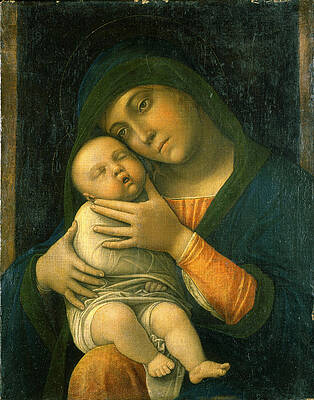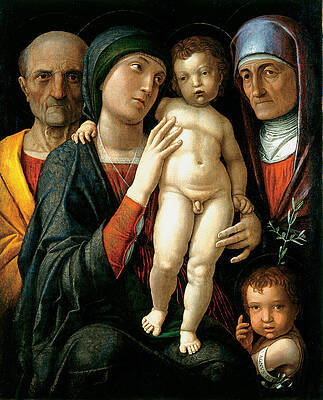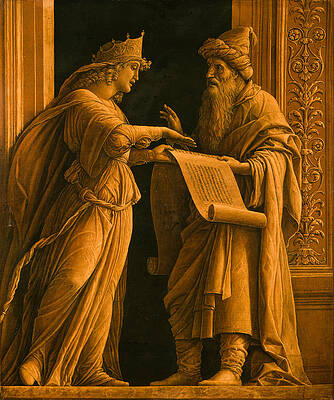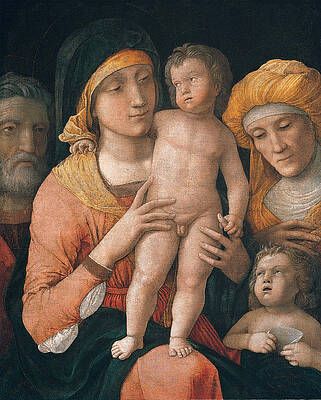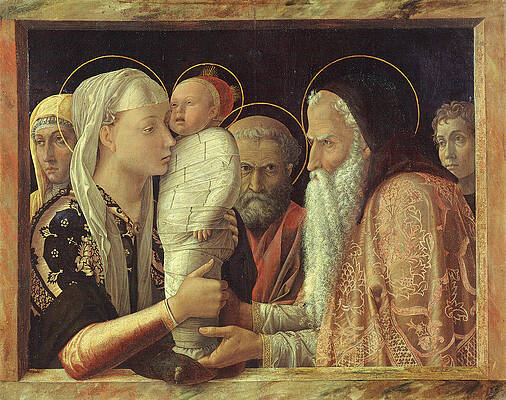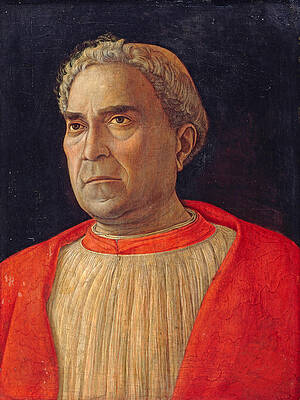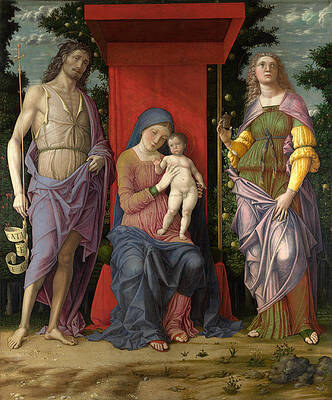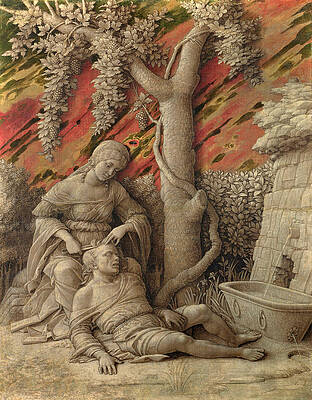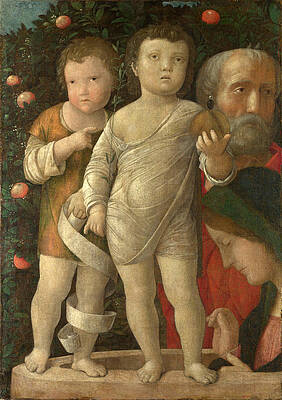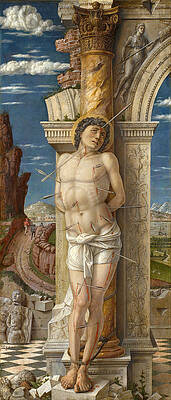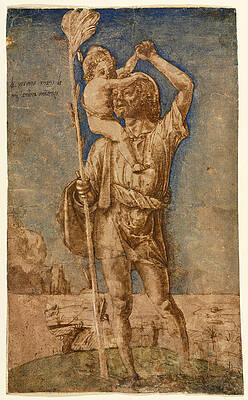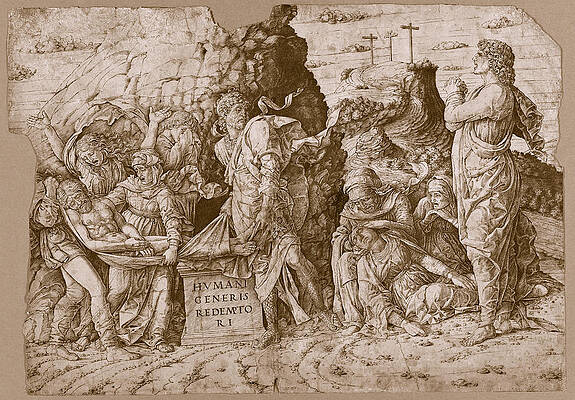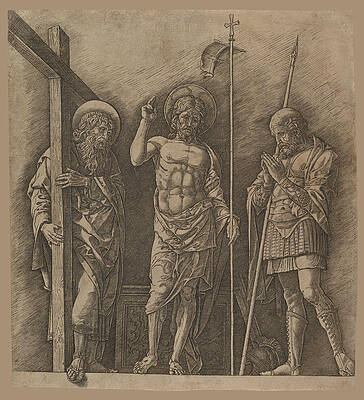Andrea Mantegna
Paintings
The Virgin and Child
The Vestal Virgin Tuccia with a sieve
The Adoration of the Shepherds
Adoration of the Magi
A Woman Drinking
The Introduction of the Cult of Cybele at Rome
The Madonna of the Cherubim
The Holy Family
Sacrifice of Isaac
A Sibyl and a Prophet
The Madonna and Child with Saints Joseph, Elizabeth, and John the Baptist
The Presentation
Cardinal Ludovico Scarampi Mezzarota called Ludovico Trevisano
The Virgin and Child with Saints
The Agony in the Garden
Samson and Delilah
The Holy Family with Saint John
Saint Sebastian
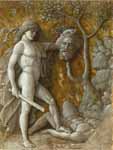
David with the head of Goliath,

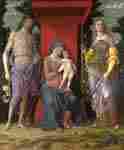
The Virgin and Child with Saints
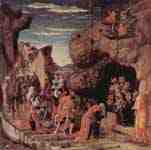
Adoration of the Three Holy Kings


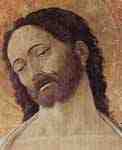
Altarpiece of St. Luke , detail

Altarpiece of St. Luke , detail
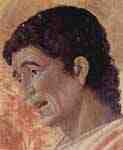
Altarpiece of St. Luke , detail

Altarpiece of St. Luke , detail
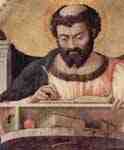
Altarpiece of St. Luke , detail

Altarpiece of St. Luke , detail

Altarpiece of St. Luke , detail
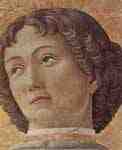
Altarpiece of St. Luke , detail
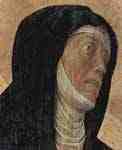
Altarpiece of St. Luke , detail

Altar of San Zeno in Verona : Saints
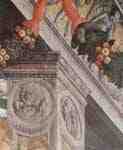
Altar of San Zeno in Verona: Saints, detail

Altar of San Zeno in Verona: Christ on the Mount of Olives

Altar of San Zeno in Verona : Madonna
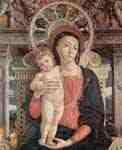
Altar of San Zeno in Verona : Madonna , detail
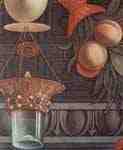
Altar of San Zeno in Verona : Madonna , detail
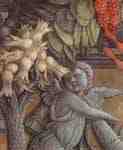
Altar of San Zeno in Verona : Madonna , detail
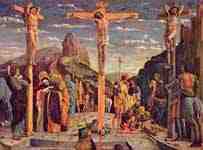
Altar of San Zeno in Verona : Crucifixion
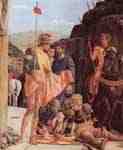
Altar of San Zeno in Verona : Crucifixion , detail
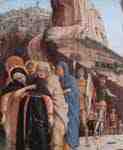
Altar of San Zeno in Verona : Crucifixion , detail

Altar of San Zeno in Verona : Saints
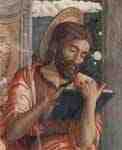
Altar of San Zeno in Verona: Saints, detail
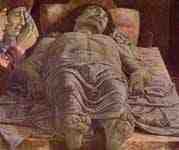


Christ on the Mount of Olives in the Garden of Gethsemane
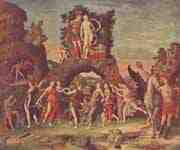
The Parnassus
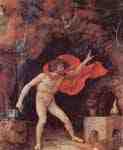
The Parnassus , detail
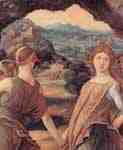
The Parnassus , detail
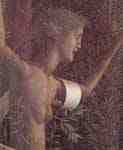
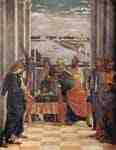

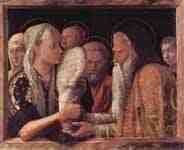
The presentation of Christ in the Temple
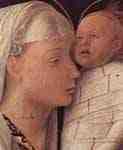
The presentation of Christ in the Temple , detail
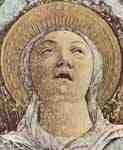
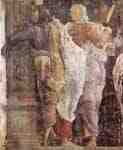
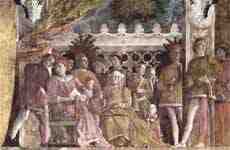
Camera degli Sposi : the Court of Gonzaga
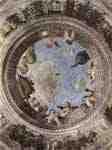
Camera degli Sposi : vault fresco
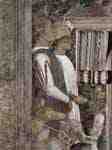
Camera degli Sposi : Waiting servants with dogs

Camera degli Sposi : Waiting grooms
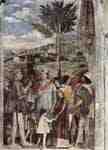
Camera degli Sposi : Meeting of Duke and Cardinal
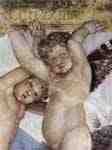
Camera degli Sposi : consecration panel , detail
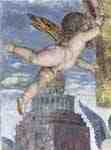
Camera degli Sposi : consecration panel , detail
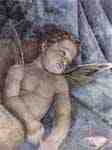
Camera degli Sposi : consecration panel , detail
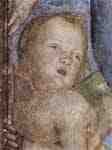
Camera degli Sposi : consecration panel , detail
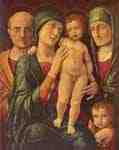
Holy Family with St Elizabeth and St John the Baptist

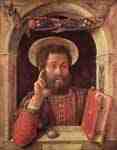



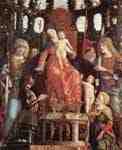
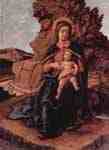


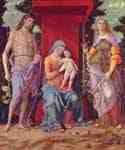

The Virgin with the Sleeping Child
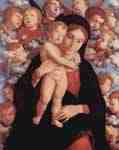
Madonna with Child and Angels, fragment

Portrait of Cardinal Carlo de ' Medici
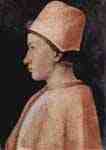
Portrait of a prelate in the House of Gonzaga

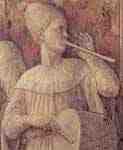
Drawings, Illustrations
Saint Christopher
The Battle of the Sea Gods. Left portion of a frieze
The Entombment of Christ
The Risen Christ between Saint Andrew and Saint Longinus
The Battle of the Sea Gods. Right portion of a frieze
A Bird Perched on a Branch with Fruit


Judith with the Head of Holofernes
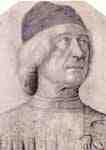

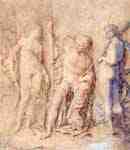
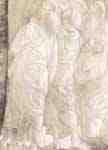
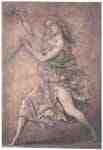
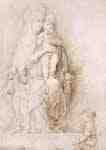
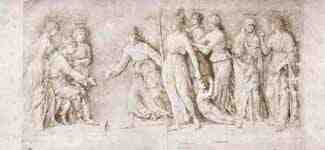
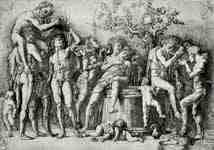
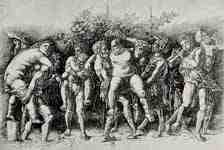
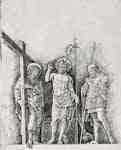
The Risen Christ between Saints
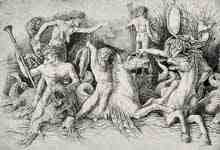
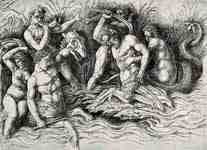

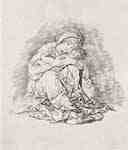
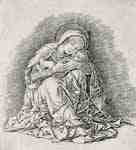
Fine Art Prints | Greeting Cards | iPhone Cases | Tote Bags | Clothing | Lifestyle | Beach ...
Andrea Mantegna (Italian: [anˈdrɛa manˈteɲɲa]; c. 1431 – September 13, 1506) was an Italian painter, a student of Roman archeology, and son in law of Jacopo Bellini. Like other artists of the time, Mantegna experimented with perspective, e.g., by lowering the horizon in order to create a sense of greater monumentality. His flinty, metallic landscapes and somewhat stony figures give evidence of a fundamentally sculptural approach to painting. He also led a workshop that was the leading producer of prints in Venice before 1500.
Biography
Youth and education
Mantegna was born in Isola di Carturo, Italy close to Padua (then part of the Republic of Venice), second son of a carpenter, Biagio. At the age of eleven he became the apprentice of Francesco Squarcione, Paduan painter. Squarcione, whose original vocation was tailoring, appears to have had a remarkable enthusiasm for ancient art, and a faculty for acting. Like his famous compatriot Petrarca, Squarcione was something of a fanatic for ancient Rome: he traveled in Italy, and perhaps Greece, amassing antique statues, reliefs, vases, etc., forming a collection of such works, then making drawings from them himself, and throwing open his stores for others to study. All the while, he continued undertaking works on commission for which his pupils no less than himself were made available.
The Agony in the Garden (right panel of the predella of the San Zeno Altarpiece, 1455) National Gallery, London is the pinnacle of Mantegna's early style.
As many as 137 painters and pictorial students passed through Squarcione's school, which had been established towards 1440 and which became famous all over Italy. Padua was attractive for artists coming not only from Veneto but also from Tuscany, such as Paolo Ucello, Filippo Lippi and Donatello. Mantegna's early career was shaped indeed by impressions of Florentine works. At the time, Mantegna was said to be a favorite pupil. Squarcione taught him Latin and instructed him to study fragments of Roman sculpture. The master also preferred forced perspective, the lingering results of which may account for some of Mantegna's later innovations. However, at the age of seventeen, Mantegna separated himself from Squarcione. He later claimed that Squarcione had profited from his work without paying the rights.
His first work, now lost, was an altarpiece for the church of Santa Sofia in 1448. The same year Mantegna was called, together with Nicolò Pizolo, to work with a large group of painters entrusted with the decoration of the Ovetari Chapel in the transept of the church of the Eremitani. It is probable, however, that before this time some of the pupils of Squarcione, including Mantegna, had already begun the series of frescoes in the chapel of S. Cristoforo, in the church of Sant'Agostino degli Eremitani, today considered his masterpiece. After a series of coincidences, Mantegna finished most of the work alone, though Ansuino, who collaborated with Mantegna in the Ovetari Chapel, brought his style in the Forlì school of painting. The now censorious Squarcione carped about the earlier works of this series, illustrating the life of St James; he said the figures were like men of stone, and had better have been colored stone-color at once.
This series was almost entirely lost in the 1944 allied bombings of Padua. The most dramatic work of the fresco cycle was the work set in the worm's-eye view perspective, St. James Led to His Execution. (For an example of Mantegna's use of a lowered view point, see the image at right of Saints Peter and Paul; though much less dramatic in its perspective than the St. James picture, the San Zeno altarpiece was done shortly after the St. James cycle was finished, and uses many of the same techniques, including the classicizing architectural structure.)
The sketch of the St. Stephen fresco survived and is the earliest known preliminary sketch which still exists to compare to the corresponding fresco. The drawing shows proof that nude figures were used in the conception of works during the Early Renaissance. In the preliminary sketch, the perspective is less developed and closer to a more average viewpoint however. Despite the authentic look of the monument, it is not a copy of any known Roman structure. Mantegna also adopted the wet drapery patterns of the Romans, who derived the form from the Greek invention, for the clothing of his figures, although the tense figures and interactions are derived from Donatello
Among the other early Mantegna frescoes are the two saints over the entrance porch of the church of Sant'Antonio in Padua, 1452, and an altarpiece of San Luca Altarpiece from 1453, with St. Luke and other saints for the church of S. Giustina, now in the Brera Gallery in Milan (1453). As the young artist progressed in his work, he came under the influence of Jacopo Bellini, father of the celebrated painters Giovanni Bellini and Gentile Bellini, and of a daughter Nicolosia. In 1453 Jacopo consented to a marriage between Nicolosia and Mantegna.
Aesthetic
Christ as the Suffering Redeemer. Christ resurrecting, depicred according to Luke 24:1-2, praising thre Lord with a hymn.[1]
Andrea seems to have been influenced by his old preceptor's strictures, although his later subjects, for example, those from the legend of St. Christopher, combine his sculptural style with a greater sense of naturalism and vivacity. Trained as he had been in the study of marbles and the severity of the antique, Mantegna openly avowed that he considered ancient art superior to nature as being more eclectic in form. As a result, the painter exercised precision in outline, privileging the figure. Overall, Mantegna's work thus tended towards rigidity, demonstrating an austere wholeness rather than graceful sensitivity of expression. His draperies are tight and closely folded, being studied (it is said) from models draped in paper and woven fabrics gummed in place. His figures are slim, muscular and bony; the action impetuous but of arrested energy. Finally, tawny landscape, gritty with littering pebbles, marks the athletic hauteur of his style.
Mantegna never changed the manner which he had adopted in Padua, though his coloring—at first neutral and undecided—strengthened and matured. Throughout his works there is more balancing of color than fineness of tone. One of his great aims was optical illusion, carried out by a mastery of perspective which, though not always mathematically correct, attained an astonishing effect in those times.
Successful and admired though he was there, Mantegna left his native Padua at an early age, and never resettled there again; the hostility of Squarcione has been assigned as the cause. He spent the rest of his life in Verona, Mantua and Rome; it has not been confirmed that he also stayed in Venice and Florence. In Verona around 1459, he painted a grand altarpiece for the church of San Zeno Maggiore, depicting a Madonna and angels, with four saints on each side on the San Zeno Altarpiece, central panel, San Zeno, Verona. It was probably the first good example of Renaissance art in Verona, and inspired a similar painting by the Veronese artist Girolamo dai Libri.[2]
Work in Mantua
The Marquis Ludovico III Gonzaga of Mantua had for some time been pressing Mantegna to enter his service; and the following year, 1460 Mantegna was appointed court artist. He resided at first from time to time at Goito, but, from December 1466 onwards, he moved with his family to Mantua. His engagement was for a salary of 75 lire a month, a sum so large for that period as to mark conspicuously the high regard in which his art was held. He was in fact the first painter of any eminence ever domiciled in Mantua.
His Mantuan masterpiece was painted for the court of Mantua, in the apartment of the Castle of the city, today known as Camera degli Sposi (literally, "Wedding Chamber") of Palazzo Ducale, Mantua: a series of full compositions in fresco including various portraits of the Gonzaga family and some figures of genii and other thumb|200px|details.
The Chamber's decoration was finished presumably in 1474. The ten years that followed were not happy ones for Mantegna and Mantua: his character grew irritable, his son Bernardino died, as well as the marquis Ludovico, his wife Barbara and his successor Federico (who had declared Mantegna cavaliere, "knight" ). Only with the election of Francesco II of Gonzaga did the artistic commissions in Mantua begin again. He built a stately house in the area of the church of San Sebastiano, and adorned it with a multitude of paintings. The house can be still seen today, although the pictures have perished. In this period he began to collect some ancient Roman busts (which were donated to Lorenzo de Medici when the Florentine leader visited Mantua in 1483), painted some architectonic and decorative fragments, and finished the intense St. Sebastian now in the Louvre (box at top).
Judith with the Head of Holofernes, by Andrea Mantegna or possibly Giulio Campagnola
In 1488 Mantegna was called by Pope Innocent VIII to paint frescos in a chapel Belvedere in the Vatican. This series of frescos, including a noted Baptism of Christ, was destroyed by Pius VI in 1780. The pope treated Mantegna with less liberality than he had been used to at the Mantuan court; but all things considered their connection, which ceased in 1500, was not unsatisfactory to either party. Mantegna also met the famous Turkish hostage Jem and studied with attention the ancient monuments, but his impression of the city was a disappointing one as a whole. Returned to Mantua in 1490, he embraced again his more literary and bitter vision of antiquity, and entered in strong connection with the new marquise, the cultured and intelligent Isabella d'Este.
In what was now his city he went on with the nine tempera pictures of the Triumphs of Caesar, which he had probably begun before his leaving for Rome, and which he finished around 1492. These superbly invented and designed compositions are gorgeous with the splendour of their subject-matter, and with the classical learning and enthusiasm of one of the master-spirits of the age. Considered Mantegna's finest work, they were sold in 1628 along with the bulk of the Mantuan art treasures to King Charles I of England. They are now in Hampton Court Palace, somewhat faded, but many repaintings have been removed in a recent restoration. His workshop produced a series of engravings after them, which largely account for their rapid fame throughout Europe.
Later years
In spite of declining health, Mantegna continued to be active. Other works of this period include the Madonna of the Caves, the St. Sebastian and the famous Lamentation over the Dead Christ, probably painted for his personal funerary chapel. Another work of Mantegna's later years was the so-called Madonna della Vittoria, now in the Louvre. It was painted in tempera about 1495, in commemoration of the Battle of Fornovo, whose disputable outcome Francesco Gonzaga was eager to show as an Italian League victory; the church which originally housed the picture was built from Mantegna's own design. The Madonna is here depicted with various saints, the archangel Michael and St. Maurice holding her mantle, which is extended over the kneeling Francesco Gonzaga, amid a profusion of rich festooning and other accessory. Though not in all respects of his highest order of execution, this counts among the most obviously beautiful and attractive of Mantegna's works from which the qualities of beauty and attraction are often excluded, in the stringent pursuit of those other excellences more germane to his severe genius, tense energy passing into haggard passion.
After 1497 Mantegna was commissioned by Isabella d'Este to translate the mythological themes written by the court poet Paride Ceresara into paintings for her private apartment (studiolo) in the Palazzo Ducale. These paintings were dispersed in the following years: one of them, the legend of the God Comus, was left unfinished by Mantegna and completed by his successor as court painter in Mantua, Lorenzo Costa.
After the death of his wife, Mantegna became at an advanced age the father of a natural son, Giovanni Andrea; and at the last, although he continued launching out into various expenses and schemes, he had serious tribulations, such as the banishment from Mantua of his son Francesco, who had incurred the marquis' displeasure. Perhaps the aged master and connoisseur regarded as barely less trying the hard necessity of parting with a beloved antique bust of Faustina.
Very soon after this transaction he died in Mantua, on September 13, 1506. In 1516, a handsome monument was set up to him by his sons in the church of Sant'Andrea, where he had painted the altar-piece of the mortuary chapel. The dome is decorated by Correggio.
Engravings
Bacchanal with a wine vat, engraving by Mantegna, c1475, 278 x 422 mm
Mantegna was no less eminent as an engraver, though his history in that respect is somewhat obscure, partly because he never signed or dated any of his plates, but for a single disputed instance of 1472. The account which has come down to us from Vasari (as usual keen to assert that everything flows from Florence) is that Mantegna began engraving in Rome, prompted by the engravings produced by the Florentine Baccio Baldini after Sandro Botticelli. This is now considered most unlikely as it would consign all the numerous and elaborate engravings made by Mantegna to the last sixteen or seventeen years of his life, which seems a scanty space for them, and besides the earlier engravings indicate an earlier period of his artistic style. He may have begun engraving while still in Padua, under the tuition of a distinguished goldsmith, Niccolò. He and his workshop engraved about thirty plates, according to the usual reckoning; large, full of figures, and highly studied. It is now considered either that he only engraved seven himself, or none. Another artist from the workshop who made several plates is usually identified as Zoan Andrea.
Among the principal examples are: Battle of the Sea Monsters, Virgin and Child, a Bacchanal Festival, Hercules and Antaeus, Marine Gods, Judith with the Head of Holophernes, the Deposition from the Cross, the Entombment, the Resurrection, the Man of Sorrows, the Virgin in a Grotto, and several scenes from the Triumph of Julius Caesar after his paintings. Several of his engravings are supposed to be executed on some metal less hard than copper. The technique of himself and his followers is characterized by the strongly marked forms of the design, and by the parallel hatch marks to produce shadows. The closer the parallel marks, the darker the blacks were. The prints are frequently to be found in two states, or editions. In the first state the prints have been taken off with the roller, or even by handpressing, and they are weak in tint; in the second state the printing press has been used, and the ink is stronger.
Neither Mantegna or his workshop are now believed to have produced the so-called Mantegna Tarocchi cards.
Assessment and legacy
Giorgio Vasari eulogizes Mantegna, although pointing out his litigious character. He had been fond of his fellow-pupils at Padua: and for two of them, Dario da Trevigi and Marco Zoppo, he retained a steady friendship. Mantegna became very expensive in his habits, fell at times into difficulties, and had to urge his valid claims upon the marquis' attention.
In solid antique taste, Mantegna distanced all contemporary competition. Though substantially related to the 15th century, the influence of Mantegna on the style and tendency of his age was very marked over Italian art generally. Giovanni Bellini, in his earlier works, obviously followed the lead of his brother-in-law Andrea. Albrecht Dürer was influenced by his style during his two trips in Italy. Leonardo da Vinci took from Mantegna the use of decorations with festoons and fruit.
Mantegna's main legacy in considered the introduction of spatial illusionism, both in frescoes and in sacra conversazione paintings: his tradition of ceiling decoration was followed for almost three centuries. Starting from the faint cupola of the Camera degli Sposi, Correggio brought on his master and collaborator's research in perspective constructions, producing eventually a masterwork like the dome of Cathedral of Parma.
Major works
The Virgin Mary in Andrea Mantegna's San Zeno Altarpiece combines pseudo-Arabic halos and garment hems, with an Oriental carpet at her feet (1456–1459).
St. Jerome in the Wilderness (c. 1448–1451) - Tempera on wood, 48 x 36 cm, São Paulo Museum of Art, São Paulo, Brazil
The Adoration of the Shepherds (c. 1451–1453) - Tempera on canvas transferred from wood, 40 x 55,6 cm, Metropolitan Museum of Art, New York
San Luca Altarpiece (1453) - Panel, 177 x 230 cm, Pinacoteca di Brera, Milan
Presentation at the Temple (c. 1455) - Tempera on wood, 68.9 x 86.3 cm, Staatliche Museen, Berlin, Germany
Crucifixion (1457–1459) - Wood, 67 x 93 cm, Louvre, Paris
Christ as the Suffering Redeemer (1495–1500) - Tempera on wood, 78 x 48 cm, Statens Museum for Kunst, Copenhagen, Denmark
Agony in the Garden (c. 1459) - Tempera on wood, 63 x 80 cm, National Gallery, London
Portrait of Cardinal Ludovico Trevisan, (c. 1459–1460) - Tempera on wood, 44 x 33 cm, Staatliche Museen, Berlin
St. Bernardino of Siena between Two Angels, (attributed, 1460) - Tempera on canvas, 385 x 220 cm, Pinacoteca di Brera, Milan
Portrait of a Man (c. 1460-1470) - Wood, 24.2 x 19 cm, National Gallery of Art, Washington, USA
Death of the Virgin (c. 1461) - Panel, 54 x 42 cm, Museo del Prado, Madrid
Portrait of Francesco Gonzaga (c. 1461) - Panel, 25 x 18 cm, Capodimonte Museum, Naples
Madonna with Sleeping Child (c. 1465–1470) - Oil on canvas, 43x32 cm, Staatliche Museen, Berlin
St. George (c. 1460) - Tempera on panel, 66 x 32 cm, Gallerie dell'Accademia, Venice
San Zeno Altarpiece (1457–1460) - Panel, 480 x 450 cm, San Zeno, Verona
St. Sebastian (c. 1457–1459) - Wood, 68 x 30 cm, Kunsthistorisches Museum, Vienna [1]
St. Sebastian - Panel, 255 x 140 cm, Louvre, Paris
Adoration of the Magi (1462) - Tempera on panel, 76 x 76.5 cm, Uffizi, Florence
The Ascension (1462) - Tempera on panel, 86 x 42.5 cm, Uffizi, Florence
The Circumcision (1462–1464) - Tempera on panel, 86 x 42.5 cm, Uffizi, Florence
Portrait of Carlo de' Medici (c. 1459-1466) - Tempera on panel, 40.6 x 29.5 cm, Uffizi, Florence
The Madonna of the Cherubim (c. 1485) - Panel, 88 x 70 cm, Pinacoteca di Brera, Milan
Triumph of Caesar (c. 1486) - Hampton Court Palace, England
The Lamentation over the Dead Christ (c. 1490) - Tempera on canvas, 68 x 81 cm, Pinacoteca di Brera, Milan[2]
Madonna of the Caves (1489–1490) - Uffizi, Florence
St. Sebastian (1490) - Panel, 68 x 30 cm, Ca' d'Oro, Venice
Madonna della Vittoria (1495) - Tempera on canvas, 285 x 168 cm, Louvre, Paris
Holy Family (c. 1495–1500) - Tempera on canvas, 75.5 x 61.5 cm, The Dresden Gallery, Dresden
Judith and Holofernes (1495) - Egg-tempera on wood, National Gallery of Art, Washington
Trivulzio Madonna (1497) - Tempera on canvas, 287 x 214 cm, Museo Civico d'Arte Antica, Milan
Parnassus (Mars and Venus) (1497) - Canvas, 160 x 192 cm, Louvre, Paris
Minerva Chases the Vices from the Garden of Virtue (c. 1502) - Oil on canvas, 160x192 cm, Louvre, Paris
Mantegna's only known sculpture is a "Sant'Eufemia" in the Cathedral of Irsina, Basilicata.
Notes
"christ-as-the-suffering-redeemer". www.google.com.
metmuseum Madonna and Child with Saints Girolamo dai Libri (Italian, Verona 1474–1555 Verona) edit:2000 2012
References
Public Domain This article incorporates text from a publication now in the public domain: Chisholm, Hugh, ed. (1911). Encyclopædia Britannica (11th ed.). Cambridge University Press.
Janson, H.W., Janson, Anthony F.History of Art. Harry N. Abrams, Inc., Publishers. 6 edition. January 1, 2005. ISBN 0-13-182895-9
Early Italian Engravings from the National Gallery of Art; J.A. Levinson (ed); National Gallery of Art, 1973,LOC 7379624
Martineau, Jane (ed.), Suzanne Boorsch (ed.). Andrea Mantegna (New York: Metropolitan Museum of Art; London: Royal Academy of Arts, 1992) Exhibition Catalog: Metropolitan Museum of Art; Royal Academy of Arts
"Andrea Mantegna". Catholic Encyclopedia. New York: Robert Appleton Company. 1913.
Berger, John and Katya, Lying Down to Sleep. Corraini Edizioni. 2010. ISBN 9788875702618
----
Fine Art Prints | Greeting Cards | Phone Cases | Lifestyle | Face Masks | Men's , Women' Apparel | Home Decor | jigsaw puzzles | Notebooks | Tapestries | ...
----
Artist
A - B - C - D - E - F - G - H - I - J - K - L - M -
N - O - P - Q - R - S - T - U - V - W - X - Y - Z
Retrieved from "http://en.wikipedia.org/"
All text is available under the terms of the GNU Free Documentation License


